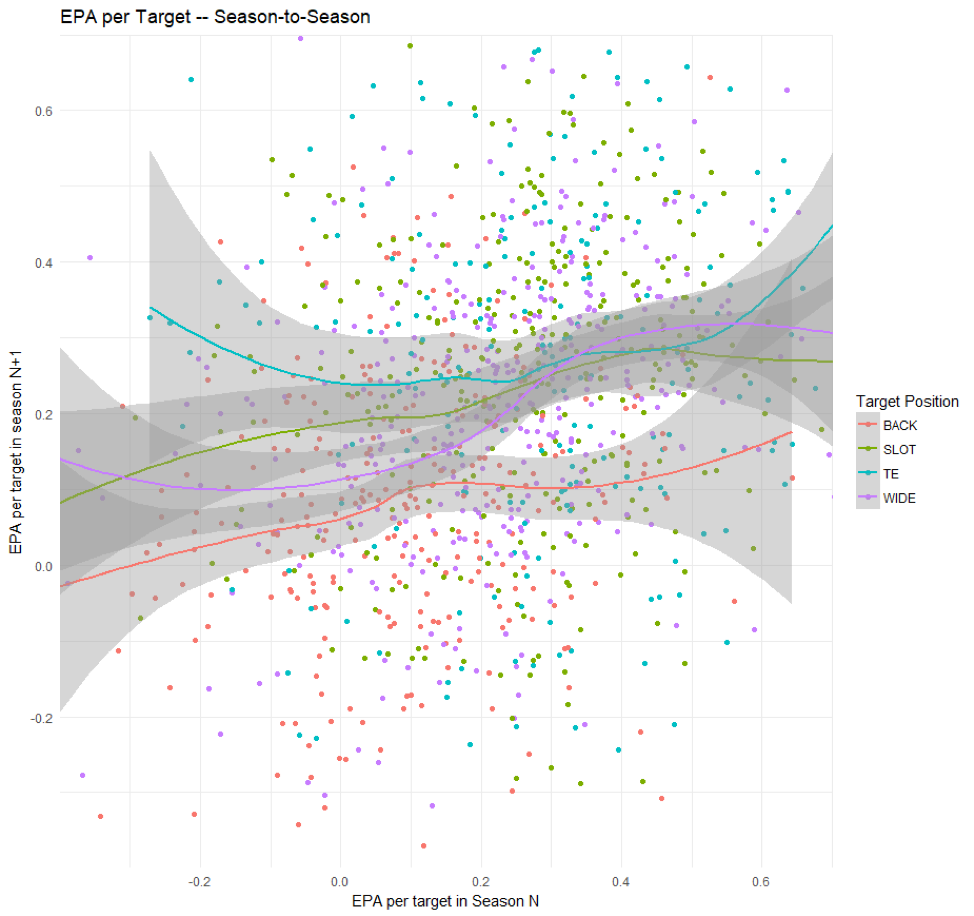Over the weekend I got the chance to read a very insightful article about slot receivers and those on the defensive side of the ball who cover them. The article, brilliantly written by the editorial Pro Football Focus, was one that offered great insight to how the professional game of football has evolved from so heavily targeting the outside “wide” receiver. Pro Football Focus is growing in notoriety; they offer cutting edge analysis on player and team tendencies, projections, and overarching trends in the game today. They break down every single play from the NFL season to produce top-of-the-line player grades, team grades, and efficiency/production ratings amongst many other things. They have emerged as one of the top sources for data concerning the NFL, a fraction of NCAA football, and 4 CFL teams who aren’t the coaches or other insiders. It is clear they have become a group who can potentially change the layout of the league by not only revealing and breaking down this otherwise exclusive and hard-to-interpret data to the public, but they can also get this data into the hands of those who can convey the value of payers that could otherwise “fall through the cracks” and be objectively undervalued.
Minnesota Vikings Receiver Adam Theilen, one of the most productive receivers in the entire league last season, took the majority of his snaps out of the slot.
For receivers and DB’s, many times play-by-play grades may not be enough to demonstrate pure value, as a lot of randomness and unnecessary “noise” may happen throughout any given play. PFF, on top of play-by-play grades, calculates a statistic called “Expected Points Added”, or “EPA”.
To put it in summation, EPA exceptionally demonstrates the overall value of each play. It takes the overall likelihood of the team on offense’s scoring chances and puts it into a figure using basic mathematical and probability techniques. As the article puts into perspective, a team with the ball on the 50-yard line with 3rd down and 5 yards to go may have an EPA of 2.1. On the flip side, a team with 3rd and 5 backed up on their own 5-yard line may have an EPA of(-2.1). If the EPA is negative, this means at the moment the other offense (the team currently on defense) is who we would expect to be the next team to score. A five-yard gain on 3rd and 5 may be a lot more valuable in terms of EPA than a five-yard gain on 1st and 10.
The way this factors into individual player efficiency is how the receivers affect the EPA per instance they are targeted (want it to be higher per target), and how defensive players affect EPA per instance they are targeted in coverage (want to be lower per target). Every single time a quarterback throws the football, there is an EPA; whether it is large or small.
Now Kansas City Chiefs cornerback, Kendall Fuller was the most efficient slot corner in terms of EPA last season (graphic by Pro Football Focus)
In the case of slot receivers, EPA is a statistic that helps demonstrate their as well as their counterparts’ value immensely. The difference between throwing to a slot receiver or an in-line tight end and throwing to a receiver out wide “is not trivial” states PFF. According to data from last season and seasons past, throwing to slots or TE’s is worth more expected points on average than receivers out wide or running backs. These claims are materialized by PFF’s quarterback charting data, which shows that “passes to slot targets had a step or more of separation nine percent more often than passes to targets who lined up out wide”.

EPA per QB target in previous seasons via Pro Football Focus
EPA may not be the single statistic that changes football analytics, but it certainly shows that we as analysts of the game can come up with tangible conclusions as to the value of players and overarching trends in the game now and in the future. Stats like these may not garner any more limelight for a particular player, but they may be integral for conveying value and efficiency, which may equate to more fiscal compensation for those who deserve it. Discoveries like these can and will be used by agents and representatives alike to negotiate better contracts for their players as they will more effectively be able to demonstrate to franchises the value of their clients.
Works Cited
Article: https://www.profootballfocus.com/news/pro-pff-forecast-examines-value-of-coverage-and-receiving
Quarterback Charting Data: https://www.profootballfocus.com/news/pro-an-introduction-to-pff-qb-charting
Author: Eric Eager, PFF
LinkedIn: https://www.linkedin.com/in/eric-eager-31a2a220/
Author: George Chahrouri
LinkedIn: https://www.linkedin.com/in/george-chahrouri-8704aa32/
